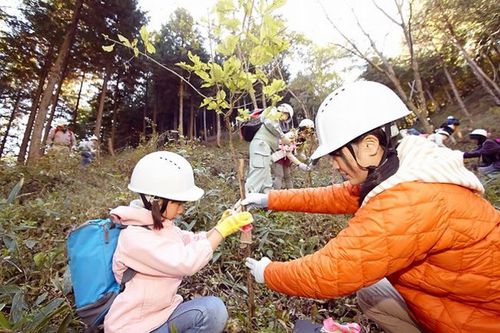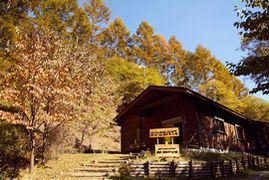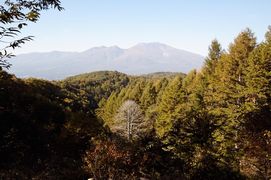August 29, 2015
Nagano Tokyo Gas Forest Marks 10-Year Anniversary
Keywords: Corporate Non-manufacturing industry

Copyright Tokyo Gas All Rights Reserved.
On May 27, 2015, Tokyo Gas Co. announced the 10th anniversary of the Nagano Tokyo Gas Forest, a wooded area managed by the company for environmental education purposes, located in Miyota Town, Nagano Prefecture. Spanning 194 hectares encompassing 1,000 to 1,230-meter-high mountain ridges and glens, the forest is home to over 400 species of plants and animals, including 17 mammals, 75 birds and 324 plants.
Nagano Tokyo Gas Forest was launched in July 2005, with an aim to offer opportunities for experience-based learning of the environment through forest conservation activities, such as reduction in carbon dioxide (CO2) emissions and biodiversity conservation. The Donguri (Acorn) Project, one of the forest's key activities, is a forest nursery program to plant and grow acorn-producing broadleaf trees such as oak. Combined with various hands-on nature programs, participants can enjoy learning the importance of the environment. Since its opening, more than 4,000 participants have participated in a variety of forest conservation activities, planting 300,000 new trees and thinning out 40,000 trees from the forest in total.


Copyright Tokyo Gas All Rights Reserved.
In the forest, there is a wooden cottage called the Ohisama House (ohisama means "sun" in Japanese). Built of larch wood culled from forests in Nagano Prefecture, the house is used as a meeting space or as shelter during sudden changes in the weather. It also takes draws from local renewable resources: it is powered by wind turbines, solar panels and low-head hydropower; heated by an electricity-free pellet stove; and supplied with stream water for toilet flushing and hand washing.
Tokyo Gas plans to continue preserving and utilizing the Nagano Tokyo Gas Forest as a place for members of the public to learn about the natural environment and energy, as part of its efforts to mitigate global warming and help create a more sustainable society.
Related JFS Articles
Related
"JFS Newsletter"
- 'Good Companies in Japan' (Article No.4): 'Eightfold Satisfaction' Management for Everyone's Happiness
- 'Good Companies in Japan' (Article No.3): Seeking Ways to Develop Societal Contribution along with Core Businesses
- "Good Companies in Japan" (Article No. 2): Seeking "Happiness" for All Stakeholders
- "We Sell Services, Not Products": Using LCA to Measure the Environmental Benefits of Nihonkai Gas's Heater Rentals
- "Good Companies in Japan" (Article No. 1): Valuing Employee Happiness and Trust
Related
"Popular Articles"
- Japanese Organic Produce Supplier Wins 2014 Award of Excellence from Food Action Nippon
- DBJ Launches Green Building Certification for Residential Developments
- Kawasaki City and Toshiba to Jointly Demonstrate Renewables and Hydrogen-Based Off-Grid Energy Supply System
- LIXIL Establishes Women Empowerment Plan Called WeDo Action
- NEC Develops Software for Storage Batteries, Helping to Improve Next-generation Power Systems


